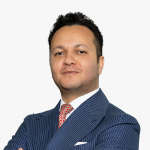‘We’re not a corporate firm, we’re an investors’ firm.’ That simple statement by one partner stood out more than any other during a recent meeting with Ropes & Gray. The point being made was that the firm – and its rapid progress in the City – had not been built on the back of large corporate or investment banking clients – it was focused on a range of sponsors and funds, in particular in private equity and leveraged finance.
The same partner stressed the cultural impact on Ropes of being bred in Boston, a major hub for investors and funds, not banks.
As we note in our analysis, ‘The third wave‘ as part of our annual Global London report, this approach is driving a new breed of US firms in the City who have proved able to move at unprecedented speed. The second wave of US expansion in London in the late 1990s and early 2000s focused on generalism and targeting corporate and mainstream banking work… and largely ran into a brick wall as such clients remained wedded to their established local advisers.
No wonder there used to be a rolling of eyes in the Square Mile every time another US firm arrived making bold promises… and the same old mistakes.
In contrast, firms like Ropes and Quinn Emanuel Urquhart & Sullivan have had a very different playbook, and seen very different results. The investor/funds sensibility is, of course, in evidence in the high-impact London deals pulled off by Akin Gump Strauss Hauer & Feld and Cooley that we assess, as is the avoidance of targeting general corporate work.
Similar approaches can be seen in the success of Latham & Watkins and Kirkland & Ellis – the former firm now generates more in the UK than any other foreign firm. Going for portable clients, with a more personalised relationship with their advisers, has provided demonstrable dividends for US firms – as witnessed by huge ground now ceded in leveraged finance to US advisers. This is reflected also in contentious work with the rise of global investigations and regulatory matters, which is to a considerable extent driven by US agencies and liabilities.
Much of this is down to fortune, of course, and forces far outside the control of law firm leaders. But the sense is building that City law firms are struggling to sufficiently adapt their model to cope with a market in which banking clients are no longer the be-all and end-all. The US question remains as unresolved as it has been for more than a decade now for London’s legal elite. In contrast, American firms’ increasingly focused practices are being further sharpened by the recent trend to concentrate fire on London as a key hub rather than build wider regional European networks.
Such shifts are contributing to a quickening pace at US-bred advisers – with London headcount across the top 50 firms up 7% annually the group now employs 4,937 lawyers (interestingly the number of foreign-qualified lawyers continues to rise sharply on strong demand for US law financing in Europe).
But overall headcount obscures the real significance of the last three years, which isn’t more bodies, it is mounting evidence of US law firms building profitable practices on margins comparable to their home market. And that really does change the game for good.
alex.novarese@legalease.co.uk
For more on international firms’ progress in the City see: Game Over – Global London firms make winning moves as US players secure their breakthrough









